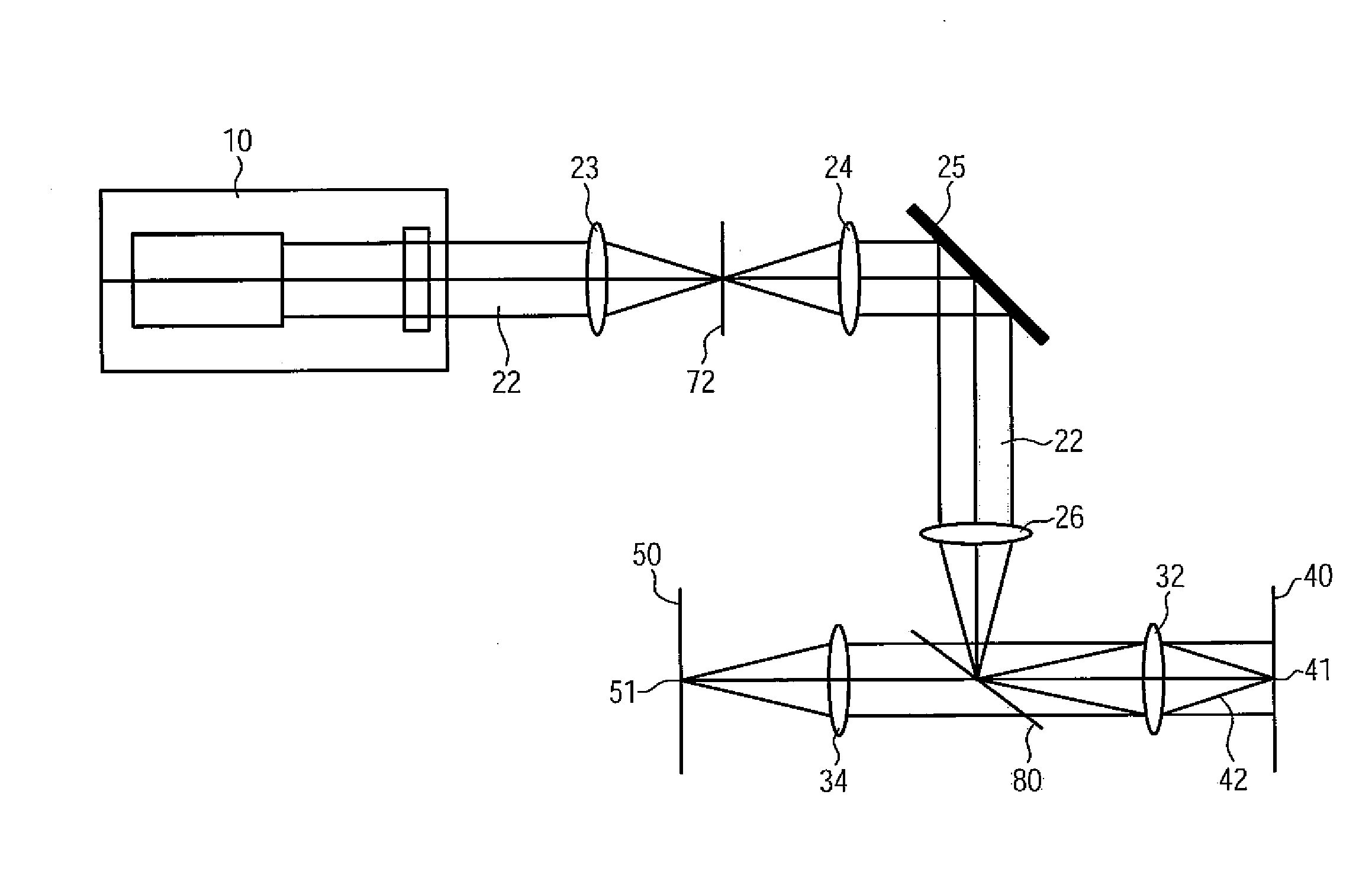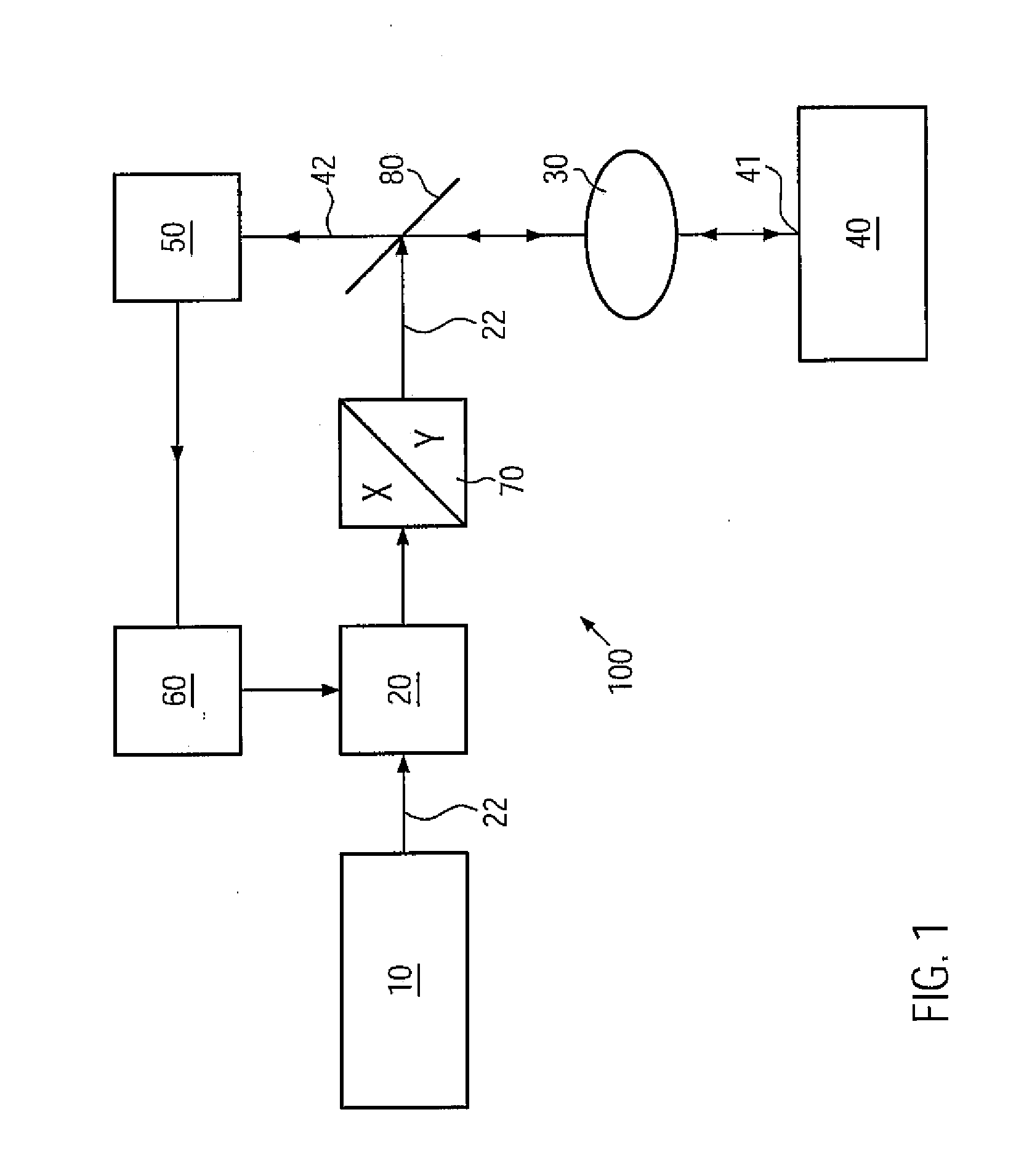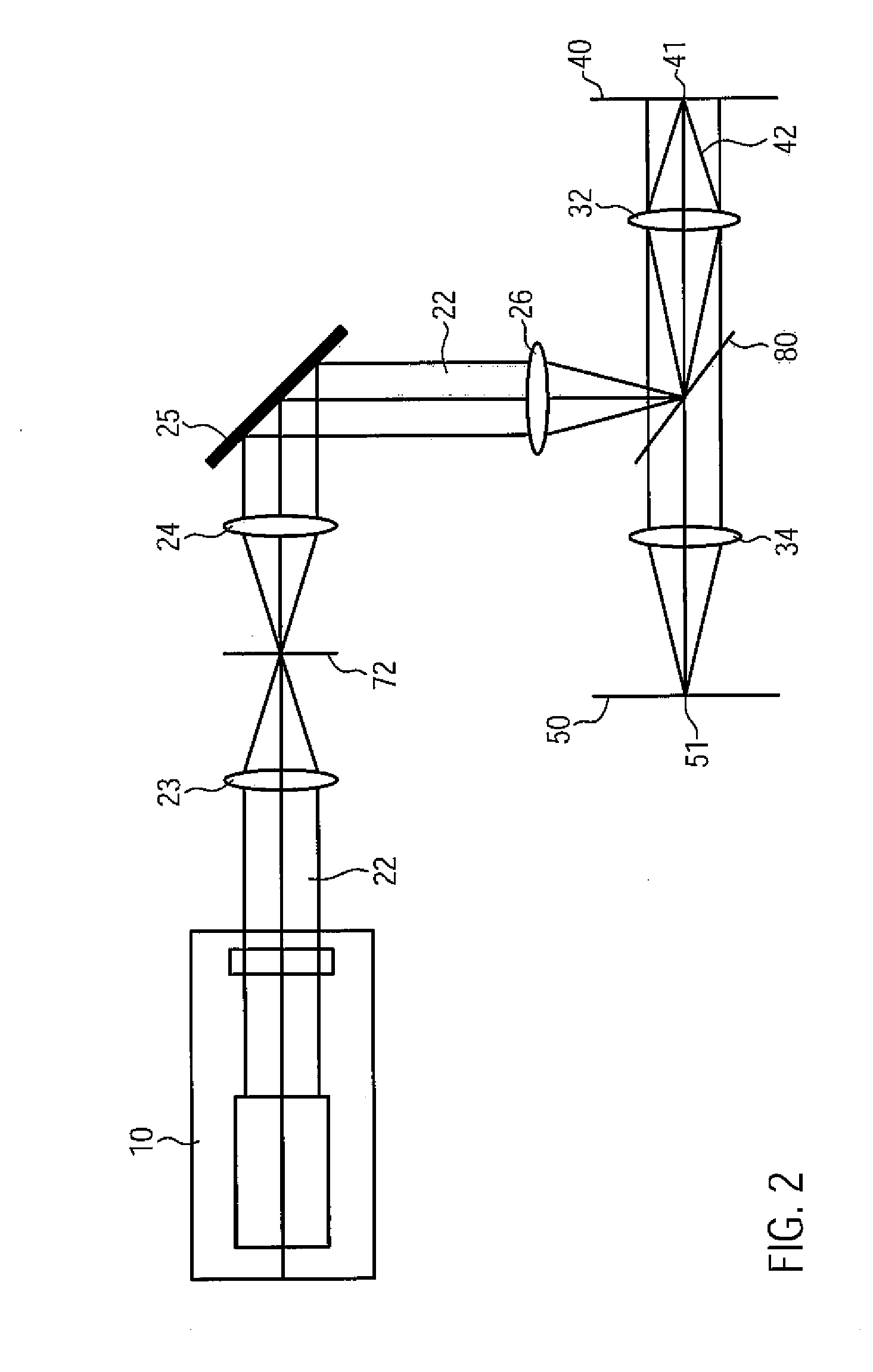Microscope and method for operating a microscope
a microscope and microscope technology, applied in the field of microscopes and microscopes, can solve the problems of limited image-recording of living cells, limited number of possible image-recordings, and often reached limits, so as to reduce the photobleaching of dyes, reduce the damage of photodetectors, and extend the dynamic range.
- Summary
- Abstract
- Description
- Claims
- Application Information
AI Technical Summary
Benefits of technology
Problems solved by technology
Method used
Image
Examples
Embodiment Construction
[0079]The structure of a microscope of the invention and the elementary sequences of the method of the invention are explained below with reference to FIGS. 1 and 7. Additional exemplary embodiments are then explained with reference to FIGS. 2 to 6 and 8. Equivalent components in the figures are provided with the same reference signs.
[0080]The microscope 100 of the invention shown diagrammatically in FIG. 1 is a point-scanning microscope. The microscope 100 includes a light source 10 such as a laser, an intensity modulator 20, a scanning device 70, a microscope optics 30, a detector 50 and a regulating device 60. The light source 10 emits excitation light 22 for the microscopic examination of a specimen 40. An intensity of the excitation light 22 is selectively adjusted, according to the invention, with the aid of the intensity modulator 20. The excitation light 22 reaches a point 41 of the specimen by way of the scanning device 70, a main beam splitter 80 and the diagrammatically i...
PUM
 Login to View More
Login to View More Abstract
Description
Claims
Application Information
 Login to View More
Login to View More - R&D
- Intellectual Property
- Life Sciences
- Materials
- Tech Scout
- Unparalleled Data Quality
- Higher Quality Content
- 60% Fewer Hallucinations
Browse by: Latest US Patents, China's latest patents, Technical Efficacy Thesaurus, Application Domain, Technology Topic, Popular Technical Reports.
© 2025 PatSnap. All rights reserved.Legal|Privacy policy|Modern Slavery Act Transparency Statement|Sitemap|About US| Contact US: help@patsnap.com



